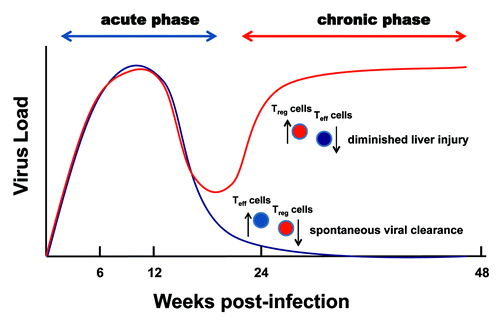Figures & data
Figure 1. Increases in both the number and function of Treg cells have been implicated in the pathogenesis of chronic hepatitis C. Virus-associated regulatory T cell epitopes, homologous to peptide sequences found in the human plasma proteome, induce nTreg cell activation, conversion of Teff to iTreg cells and infectious tolerance (A). Viral epitopes lacking human homology, which are presented by immature DCs, elicit additional HCV-specific iTreg cells (B). Treg cells inhibit Teff cell function by direct, contact-dependent and -independent mechanisms and by indirect mechanisms that affect DC maturation and/or immunostimulatory activity (C).

